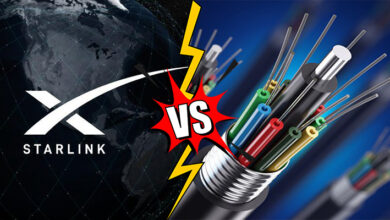Starlink: Battle for Atlas hands-on preview — On my mission to save toys-to-life
Ubisoft showed off its new entry in the “toys-to-life” market, Starlink: Battle for Atlas. I played it at a preview event, and it brought back memories of how big the toys-to-life market used to be. I think this one has a good chance to succeed because Ubisoft is investing in a brand-new universe.
Activision and Toys for Bob initiated the market with Skylanders: Spyro’s Adventure in 2011. By 2014, the toy-game hybrid had generated more than $2 billion in revenues from the sales of video games and more than 175 million action figures. But then it fell apart. Activision, Disney, and Warner Bros. all entered and exited the market. In 2017, Activision put Skylanders on hiatus, seemingly a victim of the retail inventory excess problem.
That tells you the significance of Ubisoft’s entry into this market. The huge French game publisher could save toys-to-life as a billion-dollar segment of gaming. Or it could put a nail in its coffin.
That’s a lot of weight on the shoulders of Ubisoft’s Matthew Rose, who assembled a small team of eight people in Toronto and started toying with a new game. Over the past few years, they turned it into a full-blown project, and won the support of Nintendo, which will let Ubisoft to use Nintendo’s Starfox character Fox McCloud in the game. Now the game will debut on October 16 on the PlayStation 4, Xbox One, and Nintendo Switch.

Above: Starlink: Battle for Atlas.
Image Credit: Ubisoft
With Starlink, you have a modular spaceship that you can customize yourself. You pick your pilot. Then you attach the starship and two weapons to the controller. Everything snaps together easily. Then you dive into the video game and fight. If you’ve got the wrong toys attached for the enemy you’re facing, you can switch them on the fly and the game will keep playing.
I played the game on the Xbox One, fighting battles on the planet Haven and attaching different toys to my controller, while producer Matthew Rose gave me guidance on what to do.
The game takes place in the Atlas system, which has seven inhabited worlds. I played in Act II on the Xbox One, exploring the once-happy world of Haven, a peaceful world with plants that are 80 stories high. It has since been overrun by the Forgotten Legion. I started playing by picking up a controller and attaching a pilot to it. I chose to go with a female character named Shaid, who has a stealthy profile. I attached her ship, and clipped on both a gun and some missiles.
I was immediately thrown into a dogfight in space, as I had to hunt down enemy Drake space fighters. My guided missiles were a good choice, as all I had to do was stay in close pursuit of the Drakes. The missiles homed in on the target and eventually blew it apart. Once we prevailed, Shaid started throwing shade at the surviving outlaw. “Most outlaws only have one code. Shoot first, talk never,” she said in her cynical voice.
Then we descended to the surface of Haven.
What you’ll like

Above: Dean Takahashi of GamesBeat and Matthew Rose of Ubisoft play Starlink.
Image Credit: Ubisoft
You can hot link toys to the controller
When you link a pilot, ship, or weapon to the game controller, it goes live instantly in the game. If you’re in a tough battle, or you’ve got the wrong weapon, you can immediately disengage and plug in another toy. That’s a magical marriage of physical toys and the digital game. In toys-to-life, this is table stakes. You have to make a toy instantly playable in a game, and it’s good to see that Ubisoft is nailing this part.
The worlds are alive
You’ll have seven worlds that look like something crazy out of No Man’s Sky. But the art is hand-crafted. It’s not procedural. That’s very impressive for a massive world. Rose said that the terrain is alive, with plants and structures and creatures that change. The weather will change, and the creatures will live their lives. If you pass by a contingent of the Forgotten Legion and leave them unharassed, they will likely attack an outpost. If you help the outpost, you turn the tide. But if you leave the scene and come back later, you may find that the Forgotten Legion has destroyed it. That’s a sign that the planet will live independently, regardless of what you do. And since there are seven planets, it will feel like you have a ton of things to explore. There’s also a lot of lore about Electrum and the Wardens that you’ll learn along the way.
The missions keep you busy and on target
On Haven, you find a bunch of junk, scavenge it, and turn it in to junkyard bosses for rewards. You can easily keep track of your target in the mission, as it shows up on your heads-up display. When you get to it and blow up all of the enemies, you collect the object and then are directed where you have to go to collect your reward. The junkyard bosses have their own fortresses, and I assume you’ll have to protect them from attack at some point. But I liked how it was tightly controlled. I could wander off and go pummel some other aliens or indigenous life in the middle of the mission. But once I finished, I always knew where to go next.
Starfox will add some attitude
Nintendo’s Starfox character Fox McCloud will be one of the playable pilots. You can buy the character and his ship and weapons. But he’s not just a guest character. Starfox is integrated into the cinematics of the game. If you swap him out, the game is intelligent to know that you’ve got a different character and that it should play a different cinematic appropriate for that character. The story, the cinematics, and the environment all react to your choice of a pilot.
What you won’t like

Above: Starlink’s creatures are pretty.
Image Credit: Ubisoft
It gets complicated
You have to pay attention to the color of the enemy and the color of the weapon you’re using. You’ll have four different space ships, and you’ll have to remember which of them is good for a particular kind of enemy. You’ll have seven pilots. You’ll have many kinds of weapons and accessories. At the outset of the game, it’s going to be confusing which combination is perfect for a given enemy. Rose had to tell me which ones to use. After a while, I caught on. For instance, a hot enemy that throws fire can defeat a cold enemy that is made of ice. Hopefully, the early part of the game will teach you this properly.
It will get expensive
You won’t have hundreds of toys to choose from, as you did with Skylanders. But it won’t be cheap to purchase all the stuff you’ll want in order to feel fully equipped to handle any situation. That can run up quite a bill, and it will remind you as a parent why you hated Skylanders so much. But Rose points out that you can play the game fully digitally. You’re not obligated to buy toys at all. Each ship pack is $25, pilot packs are $8, and weapon packs are $10. On top of that, you’ll buy a $75 game.
The art work and stories aren’t fantastic
At any given point, you’ll be able to stop and think that you’re playing a cool game with interesting characters and a good mini story. But you won’t say this is the best looking game I’ve ever played. You won’t say this is such a great story. You won’t say I love this character so much. Ubisoft is going to give you a lot of stuff, and the question is whether the quality of each piece will satisfy you.
Conclusion

Above: Starlink: Battle for Atlas.
Image Credit: Ubisoft
Rose said that Ubisoft is targeting children who grow up playing video games as the offspring of gamers. They can play games for young kids, but they often don’t have anything to jump to once they get to the next level. You don’t want them playing mature games like Doom. So Starlink tries to fill that void with something that is age-appropriate, Rose said. The physical-digital combination is like combining Saturday morning cartoons with toys so that you can lose yourself in the experience.
That’s a nice intent, and I can see some strong reasons why Ubisoft will be successful with its version of toys-to-life. It is trying to do a lot with this game, and the question is whether it will all wind up being good enough. I love the direction they have gone with a limited number of toys, the living world that is hand-crafted and not totally open, and the emphasis on crafted characters and good missions. These are good signs, but I’ve got to play more to find out if it will all come together as a great game.
Source: VentureBeat




